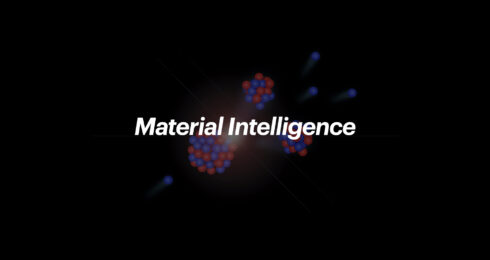Pictured: Robert Green at the Canadian Light Source. Image source: CLS/Flickr
Robert Green is an Assistant Professor in the Department of Physics and Engineering Physics at the University of Saskatchewan, and an Affiliate Investigator at the Stewart Blusson Quantum Matter Institute (Blusson QMI), where he has a long history and ongoing partnerships.
Green, formerly a Blusson QMI postdoctoral fellow supervised by George Sawatzky, is an expert in resonant x-ray reflectometry, a technique he learned while studying with Sawatzky and has since honed. Resonant x-ray reflectometry is a useful approach in studying thin films or multi-layer samples as it is allows researchers to study the materials in detail without disrupting them.
Recently, Green and his team have been focusing on the study of two-dimensional (2D) electron liquids using this reflectometry technique.
“The idea is, you have a substrate of material and you grow a thin film on top,” said Green. “Something unusual happens at the interface between the substrate and the thin-film; both materials might be electrical insulators, but at that interface they become conducting—there’s a sheet charge there, a sheet of electrons that can conduct electricity.”
Until recently, there was some controversy over how and why the sheet charge appears at the interface between two materials. Green has been working at the Canadian Light Source (CLS), using the synchrotron to study the interface in great detail.
“15 years ago, a theory regarding the origin of the 2D sheet charge was proposed. The theory suggested that the charge is the result of what’s called a polar catastrophe—the two materials are somewhat incompatible electrically, and a type of electrical breakdown leads to the conducting interface,” said Green. “Through our experiments, we were able to finally provide significant evidence for that particular theory, so it’s kind of a big step in terms of understanding what’s going on at this interface.”
Looking at strontium titanite as the substrate with lanthanum aluminate thin-film on top, Green and colleagues were able to characterize the details of the interaction at the interface between materials, demonstrating the symmetry and details of the sheet charge with greater insight than had been seen before. A paper describing this new evidence has been accepted for publication in Physical Review Materials; the preprint is now available at ArXiv.
“There are many variations on these materials—you can swap out different elements to get slightly different behaviors—so we’re excited to continue the development of our experimental technique and apply it to new systems.”
Because of his proximity to the CLS via the University of Saskatchewan, Green has found himself serving as an informal liaison to Blusson QMI researchers interested in accessing the CLS, providing instruction and support for new users, including advice on designing experiments. Green received a Young Investigator Excellence Award from the CLS in 2019 in recognition of his excellence as an early career researcher and the work he conducts at CLS.
While Green has established a busy lab in Saskatchewan, he remains connected through long-standing relationships and emerging collaborations with colleagues at Blusson QMI; pre-pandemic, Green was a regular visitor to UBC.
“I love coming back to Blusson QMI, because of the dynamic and exciting atmosphere that exists there. There are so many talented researchers doing different, amazing things and it’s hard not to be excited about the science and the people,” said Green.
Learn more about Robert Green:


